====================
A homily offered by the Rev. Dr. C. Eric Funston on the First Sunday in Lent, March 5, 2017, to the people of St. Paul’s Episcopal Church, Medina, Ohio, where Fr. Funston is rector.
(The lessons for the day are from the Revised Common Lectionary, Year A: Genesis 2:15-17;3:1-7; Psalm 32; Romans 5:12-19; and St. Matthew 4:1-11. These lessons can be read at The Lectionary Page.)
====================
 The First Sunday in Lent … that’s today. That means we get the story of Jesus being chased into the desert by the Holy Spirit after his baptism by John in the River Jordan, the story of Jesus being accosted in the desert by the Tempter (whom Matthew in our Gospel text today also names “the devil” – in Greek the word is diabolos meaning “accuser”), the story of Jesus refusing to give into the three temptations. We always get some version of this story on the First Sunday in Lent. And this year the Lectionary gives us a double-whammy of temptation by linking that familiar gospel tale with the equally family story of Eve and the serpent and the fruit of the tree of the knowledge of good and evil, the so-called “apple.”
The First Sunday in Lent … that’s today. That means we get the story of Jesus being chased into the desert by the Holy Spirit after his baptism by John in the River Jordan, the story of Jesus being accosted in the desert by the Tempter (whom Matthew in our Gospel text today also names “the devil” – in Greek the word is diabolos meaning “accuser”), the story of Jesus refusing to give into the three temptations. We always get some version of this story on the First Sunday in Lent. And this year the Lectionary gives us a double-whammy of temptation by linking that familiar gospel tale with the equally family story of Eve and the serpent and the fruit of the tree of the knowledge of good and evil, the so-called “apple.”
Temptation writ large . . . and in reading these stories again and again over the week, I kept coming back to a single question, “What exactly is temptation?”
My colleague David Henson, in the on-going online dialog we clergy seem to have about preaching and the lessons given us to preach about, was addressing the dualistic nature of the gospel lesson, how it can be wrongly understood to suggest that God and the Tempter are equals. He rightly observed that the story of Christ’s temptations can encourage us to think that there
. . . are two powerful deities – God and Satan, good and evil – commanding from the two opposing fronts of heaven and hell and warring against each other for the territory of earth and for the soul of humankind. (The Rev. David Henson, Facebook posting, March 4, 2017)
And he correctly pointed out that that would be a gross distortion of the Christian understanding of God and creation. The Tempter, the Accuser, Satan, the Devil, the wily old serpent, is not God’s equal! In the course of that discussion, David said that one reason this story can encourage that incorrect dualistic thinking is that
. . . ultimately it makes folks profoundly uncomfortable to consider Jesus being tempted — really, really, really — wanting these things, really feeling the seductive call of comfort, power, and security.
We don’t want to think of the Savior of the world, the Incarnate Son of God, as temptable.
David’s comments, however, really stirred up for me this question about what temptation really is.
Another clergy friend, Nurya Love Parish, is an Episcopal priest who like me was born and raised in Las Vegas and who, also like me, was wasn’t raised in the church. She wrote in an article in a recent issue of The Christian Century that the three temptations offered to Jesus “stand for pride, power, and possession.” She said that when she first realized that, having read it in another essay during her pre-Christian life,
I didn’t know much about Jesus, the devil, or that desert, but I knew pride. I knew the desire for power; I knew the wish for possessions. I was familiar with all of them, from painful experience.
All of a sudden the story wasn’t just about Jesus; it was about me, too. And not just me: it was about all humanity. I knew from the history books and the newspapers that we all struggle with pride, power, and possession. People and nations fight, kill, and die over who is worthy of respect, who gets control, and who owns what. The more I thought about it, the more these three simple words seemed to be at the heart of the human experience. (Living by the Word)
When I read what Nurya wrote, I thought it was spot on, and I still do, but it occurred to me that pride, power, and possession don’t really help us, or at least they don’t help me, to understand today’s other temptation story, the tale of Eve (and Adam) and the serpent and the so-called “apple.” If the temptations of Christ represent pride, power, and possession, what does the temptation of the proto-parents in Eden represent?
Well, in the midst of contemplating that, I was also doing my reading for the Education for Ministry seminar group that I participate in each week at the Cathedral, and in this week’s readings I was reminded of the theological focus of our study this year, the idea of “deification” or (to give it its technical Greek name) theosis.
Way back in the Second Century, the Bishop of Lyons in what is now France, a man named Irenaeus, wrote a book entitled Against All Heresies (Adversus omnes Haereses) in which he said, “The sure and true Teacher, the Word of God, Jesus Christ our Lord, on account of his immense love was made what we are, so that we might become what he is.” A later bishop, Athanasius of Alexandria, about 150 years later wrote, “God became human that humans might become God.” (De Incarnatione) What these ancient writers are saying is that the ultimate end of human beings is union with the divine. This is what is meant by “deification” or theosis.
You will remember, I’m sure, the words of Genesis in which the creation of humankind is described, “God created humankind in his image, in the image of God he created them.” (Gen 1:27) The Russian Orthodox theologian Paul Evdokimov says that our creation in the image of God predestines us to theosis. Our creation in God’s image gives us a built-in longing to be united with our Creator, an innate desire for deification.
The the late-17th Century French philosopher Blaise Pascal wrote about this longing in this way:
What else does this craving, and this helplessness, proclaim but that there was once in man a true happiness, of which all that now remains is the empty print and trace? This he tries in vain to fill with everything around him, seeking in things that are not there the help he cannot find in those that are, though none can help, since this infinite abyss can be filled only with an infinite and immutable object; in other words by God himself. (Pensées VII[425])
Pascal’s formulation has been summarized by the often-heard comment that we human beings have a “God-shaped hole” in us.
So it seems to me that the temptation of Eve (and Adam) is the attempt to take a shortcut to the human destiny of deification. This is what the wily serpent promises her, “You will not die; . . . when you eat of [the fruit] your eyes will be opened, and you will be like God.” (Gen 3:4-5) You will have taken a shortcut to theosis!
Shortcuts are also what the Tempter offers to Jesus.
Have you ever baked bread? I used to bake bread every week. Back in my college days, I lived in a house with six other guys, nine dogs, and a cat. We shared the cooking responsibilities (well, the guys did – the dogs and the cat, not so much). I took on the task of making our breads. I loved to bake bread; there is something intensely satisfying about it. It’s a process: the measuring, the mixing, letting the dough rise, punching it down to rise again, forming and proofing the loaves, and then the oven . . . and what comes out! It’s heaven! I love it. I wish I had the time to do it now. The Accuser’s suggestion that Jesus turn stones into bread is a shortcut temptation; forget the process, skip the work and the effort, go straight to that wonderful stuff that comes out of the oven.
The proposal that he throw himself off the pinnacle of the Temple in a show of religious power is another temptation to shortcut. Do that, make a big splashy show of being divine, and you won’t have to go through the laborious, frustrating, and frankly painful process of calling, teaching, and leading disciples. The idea that Jesus might accept political domination of the world is nothing more than the temptation to shortcut the process of being and setting a moral example, of being and showing the love and life of God in human form.
Just as, for Eve (and Adam) the temptation to eat the fruit was a temptation to shortcut the long process of learning and growing into unity and community with their God, into theosis or deification, for the Son of God the Devil’s offerings of power, pride, and possession were temptations to shortcut the process of being incarnate, of taking part in those things which my friend Nurya correctly tagged as being “at the heart of the human experience.”
So it occurred to me that that is what temptation is. That there is really only one temptation – the shortcut. That every temptation boils down to what we in the modern world have come to call “instant gratification.”
I don’t spend all my reading time on the Bible, on Education for Ministry, or on theology. I actually do take time to read for fun and currently my leisure reading is a collection of novellas by the famous science fiction writer Ursula Leguin. They have been gathered into a single volume entitled The Found and the Lost. One of the stories is a first-person narrative called A Woman’s Liberation and tells the tale of woman raised in slavery who gains freedom and becomes a scholar. At one point, describing her education, she writes,
What I loved to learn was history. I had grown up without any history. There was nothing [where I lived] but the way things were. Nobody knew anything about any time when things had been different. Nobody knew there was any place where things might be different. We were enslaved by the present time. (Ursula Leguin, The Found and the Lost, Saga Press, New York:2016, page 389)
This is what the temptations of Eve (and Adam) and of Jesus represent: entrapment in a dead-end present where the process of growth, like the yeast in the bread, like the gathering of a community of disciples, like human development into theosis, is cut short.
To be sure, Jesus told us to live in the present. “Do not worry about tomorrow,” he said, “for tomorrow will bring worries of its own. Today’s trouble is enough for today.” (Mat 6:34) But the reason he gave that instruction was clear: he said, “Do not worry, saying, ‘What will we eat?’ or ‘What will we drink?’ or What will we wear?’ For . . . your heavenly Father knows that you need all these things. But strive first for the kingdom of God and his righteousness, and all these things will be given to you as well.” (Mat 6:31-33) Do not be enslaved by the present time; do not live in a dead-end present where you have filled your “God-shaped hole” with instant gratification because of worry over pride, power, and possession.
Live in an open-ended present where things might be different, an open-ended present that leads to the kingdom of God and his righteousness, an open-ended present that leads to deification.
So . . . I think that’s the answer to my question, “What is temptation?” Temptation is a shortcut that leads to entrapment in a dead-end present. This is why Lent is a season, a process that begins with the story of Jesus’ temptation. It reminds us to live in the open-ended present where the yeast can rise, where the community can form, where becoming is as important as being.
God became human . . . and refused the temptation to shortcut that process . . . that humans might become gods . . . despite Eve’s (and Adam’s) giving into the temptation to shortcut that process. Live into that process; live in the open-ended present, the open-ended Presence of God. Amen.
====================
Father Funston is the rector of St. Paul’s Episcopal Church, Medina, Ohio.
 When the Prayers of the People are offered later in this service you will hear a name you’ve never heard before, and you will hear that the person named was buried in our memory garden this week, and you will wonder, “Who is Indra?” (“Indra” is not the child’s real name.)
When the Prayers of the People are offered later in this service you will hear a name you’ve never heard before, and you will hear that the person named was buried in our memory garden this week, and you will wonder, “Who is Indra?” (“Indra” is not the child’s real name.)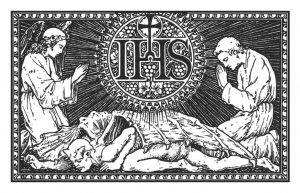 Today on the secular calendar is New Year’s Day, but that’s not true in the church. We celebrated a new church year several weeks ago on the First Sunday of Advent. In the church, January 1, being eight days after the Feast of the Incarnation, is the day on which we celebrate Jesus’ Jewishness. We call it, these days, the Feast of the Holy Name of Jesus; it was formerly called the Feast of the Circumcision of Christ because that is what Luke’s Gospel tells us was done. It was a very Jewish thing to do.
Today on the secular calendar is New Year’s Day, but that’s not true in the church. We celebrated a new church year several weeks ago on the First Sunday of Advent. In the church, January 1, being eight days after the Feast of the Incarnation, is the day on which we celebrate Jesus’ Jewishness. We call it, these days, the Feast of the Holy Name of Jesus; it was formerly called the Feast of the Circumcision of Christ because that is what Luke’s Gospel tells us was done. It was a very Jewish thing to do. I was in the pet supply aisle at Giant Eagle several days ago getting food for the Archbishop (that’s our black cocker spaniel, Lord Dudley of Ballycraic, the Archbishop Canine of Montville) when I found, right in front of the Beneful which is his favorite meal, a bin filled with these: dog toys in the likeness of a lamb dressed for Christmas. And not just any lamb! This is Lamb Chop, the somewhat snarky puppet introduced to the world by the late Shari Lewis in 1957.
I was in the pet supply aisle at Giant Eagle several days ago getting food for the Archbishop (that’s our black cocker spaniel, Lord Dudley of Ballycraic, the Archbishop Canine of Montville) when I found, right in front of the Beneful which is his favorite meal, a bin filled with these: dog toys in the likeness of a lamb dressed for Christmas. And not just any lamb! This is Lamb Chop, the somewhat snarky puppet introduced to the world by the late Shari Lewis in 1957. Which brings me to the fourth and last bit of poetry our Christmas Lamb Chop brought to mind, which is a song Lamb Chop and Shari Lewis taught their viewers during the 1992 season of the PBS show Lamb Chop’s Play-Along. Some of you may know the song and can sing along:
Which brings me to the fourth and last bit of poetry our Christmas Lamb Chop brought to mind, which is a song Lamb Chop and Shari Lewis taught their viewers during the 1992 season of the PBS show Lamb Chop’s Play-Along. Some of you may know the song and can sing along: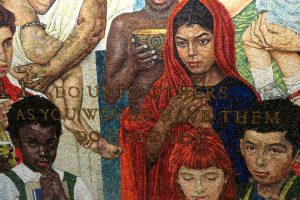 Tuesday was the Feast of All Saints (which we are commemorating today, as is permitted by tradition, by translating the feast to the following Sunday). Traditionally, All Saints Day (or All Saints Sunday) commemorates the departed members of the Christian church who are believed to have attained heaven (it is not limited to those officially canonized by a church hierarchy).
Tuesday was the Feast of All Saints (which we are commemorating today, as is permitted by tradition, by translating the feast to the following Sunday). Traditionally, All Saints Day (or All Saints Sunday) commemorates the departed members of the Christian church who are believed to have attained heaven (it is not limited to those officially canonized by a church hierarchy). 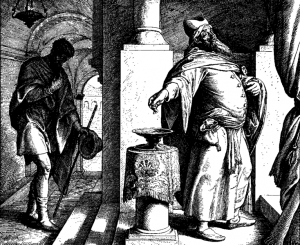 For the past couple of weeks in the Daily Office lectionary and today in the Sunday lectionary we are reading from the Wisdom of Yeshua ben Sira, some times called Sirach, sometimes called Ecclesiasticus, one of the books of the Apocrypha, those books recognized by the Roman and Eastern Orthodox churches as canonical, but rejected by Protestants. Anglicans steer a middle course and accept them for moral teaching, but not as the basis for religious doctrine. The text is a late example of what is called “wisdom literature,” instruction in ethics and proper social behavior for young men, especially those likely to take a role in governance.
For the past couple of weeks in the Daily Office lectionary and today in the Sunday lectionary we are reading from the Wisdom of Yeshua ben Sira, some times called Sirach, sometimes called Ecclesiasticus, one of the books of the Apocrypha, those books recognized by the Roman and Eastern Orthodox churches as canonical, but rejected by Protestants. Anglicans steer a middle course and accept them for moral teaching, but not as the basis for religious doctrine. The text is a late example of what is called “wisdom literature,” instruction in ethics and proper social behavior for young men, especially those likely to take a role in governance.![Dives and Lazarus. Psalter (Munich Golden Psalter). England [Gloucester?], 1st quarter of the 13th century.](http://thefunstons.com/wp-content/uploads/2016/09/Lazarus-and-Dives-300x264.jpg) We could, I suppose, spiritualize the story of Lazarus and the rich man. We could, but if we did we would be twisting it out of shape. This is not a spiritual story. This is a bare-knuckled street-brawl of a story about wealth, about money and possessions, about someone who had plenty and about someone who had none. If we are going to honor the biblical text, we cannot spiritualize this tale; we have to deal with it as it is given us, as a story about money.
We could, I suppose, spiritualize the story of Lazarus and the rich man. We could, but if we did we would be twisting it out of shape. This is not a spiritual story. This is a bare-knuckled street-brawl of a story about wealth, about money and possessions, about someone who had plenty and about someone who had none. If we are going to honor the biblical text, we cannot spiritualize this tale; we have to deal with it as it is given us, as a story about money. I’d like you all to take your Prayer Books in hand and turn with me to page 855 which is way in the back of the book in the section called The Catechism or Outline of the Faith. At the top of the page are three questions about the mission of the church and the answers to those questions that we as Episcopalians teach. I’m going to read the questions; I’d like you to read the answers:
I’d like you all to take your Prayer Books in hand and turn with me to page 855 which is way in the back of the book in the section called The Catechism or Outline of the Faith. At the top of the page are three questions about the mission of the church and the answers to those questions that we as Episcopalians teach. I’m going to read the questions; I’d like you to read the answers: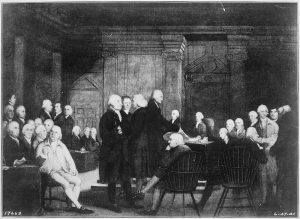 Last Monday, we celebrated our country’s 240th birthday in a way that is quite different from other celebrations of what we might call “national identity days” around the world.
Last Monday, we celebrated our country’s 240th birthday in a way that is quite different from other celebrations of what we might call “national identity days” around the world. 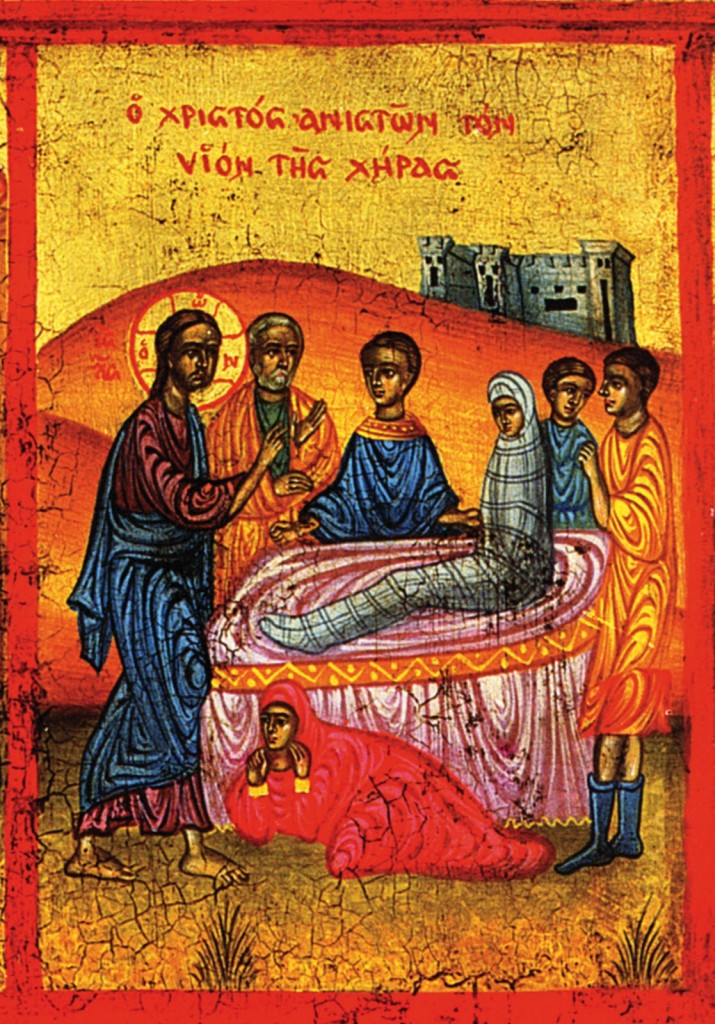 I am convinced that there is no grief quite so profound as that of a mother whose child has died. I know that fathers in the same situation feel a nearly as intense sorrow at the death of their sons or daughters, but having spent time with grieving parents, I am convinced that the grief of a mother faced with the loss of her child is the deepest sadness in human experience.
I am convinced that there is no grief quite so profound as that of a mother whose child has died. I know that fathers in the same situation feel a nearly as intense sorrow at the death of their sons or daughters, but having spent time with grieving parents, I am convinced that the grief of a mother faced with the loss of her child is the deepest sadness in human experience.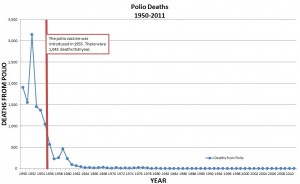 The year that I was born was the worst of the mid-20th Century polio epidemic; about 55,000 Americans contracted the disease that year and more than 3,100 died, mostly children. As a society, we decided that that much illness and death was simply unacceptable, and an all-out effort was underway to put an end to it. Within just a few years, Jonas Salk and his team developed the vaccine which ended the epidemic; a few years later, the Sabin oral vaccine was developed and polio has been just about eradicated throughout the world. (Graphic from
The year that I was born was the worst of the mid-20th Century polio epidemic; about 55,000 Americans contracted the disease that year and more than 3,100 died, mostly children. As a society, we decided that that much illness and death was simply unacceptable, and an all-out effort was underway to put an end to it. Within just a few years, Jonas Salk and his team developed the vaccine which ended the epidemic; a few years later, the Sabin oral vaccine was developed and polio has been just about eradicated throughout the world. (Graphic from  On January 21, 2013, Hadiya Pendleton, a 15-year-old high school student from the south side of Chicago, marched with her school’s band in President Obama’s second inaugural parade. One week later, Hadiya was shot and killed. She was shot in the back while standing with friends inside Harsh Park in Kenwood, Chicago, after taking her final exams. She was not the intended victim; the perpetrator, a gang member, had mistaken her group of friends for a rival gang.
On January 21, 2013, Hadiya Pendleton, a 15-year-old high school student from the south side of Chicago, marched with her school’s band in President Obama’s second inaugural parade. One week later, Hadiya was shot and killed. She was shot in the back while standing with friends inside Harsh Park in Kenwood, Chicago, after taking her final exams. She was not the intended victim; the perpetrator, a gang member, had mistaken her group of friends for a rival gang. 

